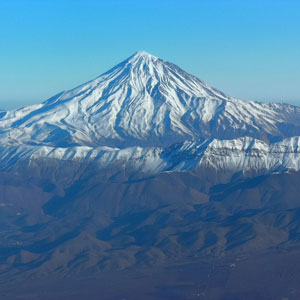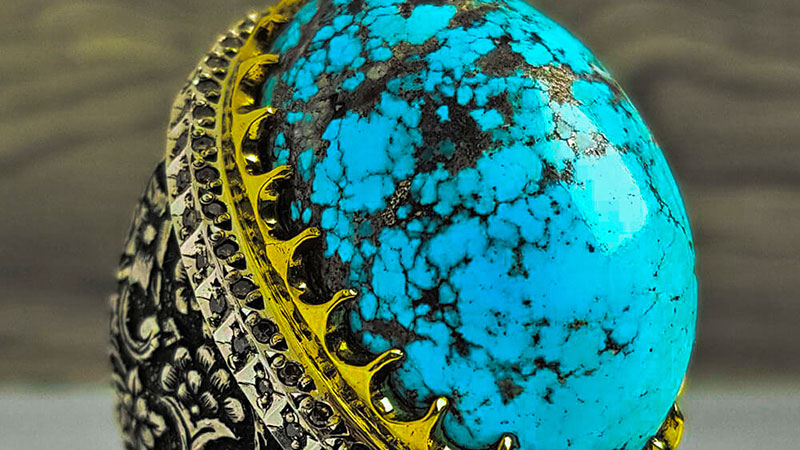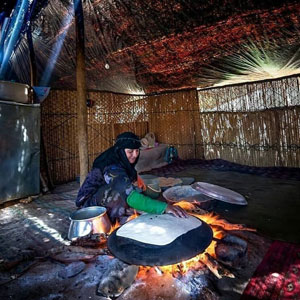 Signin with Google
Signin with Google Signin with Facebook
Signin with Facebook
 Nature,Culture
Nature,CultureNeishapur Firuzeh, the Blue Heaven on Earth

Iran is the home town for one of the oldest gems, used in many of the gorgeous Islamic architectures called Firuzeh. From the magnificent domes and minarets of Naqesh-e-Jahan square to the palaces and gardens around the country, this stone gets many gasps of amazement.
Firuzeh is among the precious stones in the world. It is an opaque, sky blue to green mineral that is very rare and comes with different grades. Firuzeh has had many names throughout history, but the one that lasted till now is 'turquoise'. It is derived from the 16th-century French language 'Turquie' meaning “Turkish” since most of the Persian mineral of the Khorasan mines in Iran was imported to Europe through Anatolia.
The Persian blue gemstone
Mining this spectacular stone started around 7000 years ago, around the Neolithic Age and the beginning of the Sedentism era. Iranians used to name it “Perozeh” which means victory. Firuzeh is naturally formed in damp soil which contains copper. There are few other countries with a similar history of Firuzeh mines, like Egypt, China and the United States. However, the ones near the city of Neyshapur, are among the oldest and still active mines today. Neyshapur, once the satrapy capital of the Sassanian Empire, is an ancient city in the Khorasan province, northeastern Iran.
During the Safavid era extracting Firuzeh was done precisely and accurately under the government's supervision. However, Qajar did not follow the same approach. Local authorities and individuals were in charge of the Mining.

Neyshapur, the centre of Jewels and Firuzeh
Neyshabur has the highest quality and the most expensive Firuzeh in the world. It is among the liveliest mines, capable of producing up to 50 metric tons of Firuzeh every year. Considering all the shortcomings in mining tools and extractions, Firuzeh is still among the profitable businesses in Iran with high demands worldwide. There are many reasons why Firuzeh has remained luxurious within different cultures, industries and arts.
Only a few countries benefit from having Firuzeh mine sites, leading to becoming a rare and infrequent stone. Also, the extraction of this stone is very challenging. According to the experts, the price of Firuzeh increases significantly once cut, a precise and sensitive step in the procedure. Moreover, in Neyshapur, the amount of Firuzeh extracted from 1500 kg of raw rock is around 3 kg. That, on its own, elevates the value of Firuzeh or turquoise stone.
Persian Firuzeh Classifications
The Persian Firuzeh falls into three main categories:
1. Angushtari: it has the highest quality, having a vibrant blue colour
2. Barkhaneh: a bit lower in quality compared to Angushtari, having few marks
3. Arabi: the colour is a bit paler than other quality stones with spots on them
The high-quality Firuzeh has an intense blue colour, the darker, the better. The most impressive Firuzeh with flawless tone is known as the Persian Sleeping Beauty.

Beliefs living as long as a Firuzeh
From the old times, starting a working day at Firuzeh mines had certain rites, which came from traditional beliefs. The mineworkers believed Firuzeh is a holy stone that comes from an infinite source. They related the abundance of these mines to being located near the shrine of Imam Reza, the eighth Imam of Shia Muslims. They also believed that if an impure sole set an eye on Firuzeh, it will turn black and white or the stone will keep away the evil eye if worn as a ring or pendant, etc. Some of these views have remained with people. Even today, Firuzeh is cherished for being a wish stone; whoever keeps or touches this stone will be fulfilled in life. And finally, some believe Firuzeh has healing nature for eye, blood and lung patients.
This gemstone is a jewellery element for the royal families around the world. Thousands of years ago, the Egyptian pharaohs extracted Firuzeh from the Sinai Peninsula and used it in their jewellery. Amongst the many jewellery collections, the pearl-shaped turquoise Tiara worn by Farah Diba, the last Empress of the Pahlavi Dynasty, is of the most dazzling and stunning pieces. Firuzeh has always been one of the main signatures on Persian culture, art and architecture.
By Maryam Mobarhani / TasteIran



